-
 Bitcoin
Bitcoin $82,979.0091
-1.33% -
 Ethereum
Ethereum $1,792.6370
-1.62% -
 Tether USDt
Tether USDt $0.9996
-0.01% -
 XRP
XRP $2.1282
-0.58% -
 BNB
BNB $591.0772
-1.27% -
 Solana
Solana $119.1306
-3.53% -
 USDC
USDC $1.0000
0.00% -
 Dogecoin
Dogecoin $0.1677
-2.64% -
 Cardano
Cardano $0.6484
-2.38% -
 TRON
TRON $0.2374
-0.44% -
 UNUS SED LEO
UNUS SED LEO $9.0535
-5.03% -
 Chainlink
Chainlink $12.6507
-2.79% -
 Toncoin
Toncoin $3.2471
-4.64% -
 Stellar
Stellar $0.2503
-3.92% -
 Avalanche
Avalanche $17.7365
-2.96% -
 Shiba Inu
Shiba Inu $0.0...01227
-0.41% -
 Sui
Sui $2.1916
-3.91% -
 Hedera
Hedera $0.1610
-2.17% -
 Litecoin
Litecoin $82.0289
-3.07% -
 Polkadot
Polkadot $3.9288
-2.99% -
 MANTRA
MANTRA $6.2560
-0.24% -
 Bitcoin Cash
Bitcoin Cash $299.8527
-0.94% -
 Dai
Dai $1.0001
0.01% -
 Bitget Token
Bitget Token $4.4388
-2.11% -
 Ethena USDe
Ethena USDe $0.9991
0.00% -
 Pi
Pi $0.5815
10.93% -
 Hyperliquid
Hyperliquid $11.7918
-3.90% -
 Monero
Monero $212.2254
-2.50% -
 Uniswap
Uniswap $5.7927
-2.67% -
 OKB
OKB $51.8813
5.71%
How is the transparency of blockchain achieved?
Blockchain's transparency, enabled by distributed ledgers and cryptographic hashing, makes transaction history publicly verifiable. While users remain pseudonymous, this openness fosters accountability and trust, though privacy concerns exist.
Mar 18, 2025 at 10:31 pm
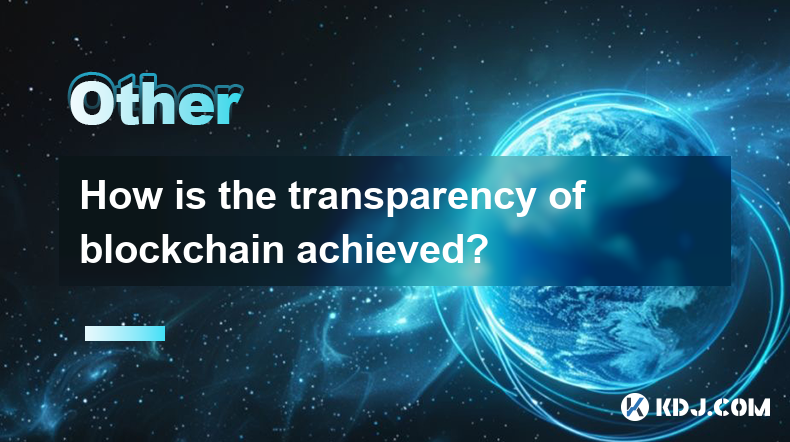
Key Points:
- Blockchain's transparency stems from its distributed ledger architecture and cryptographic hashing.
- Every transaction is recorded in a block, cryptographically linked to previous blocks, creating an immutable chain.
- Public blockchains allow anyone to view the transaction history, promoting accountability.
- Pseudonymity, not anonymity, is the norm on most blockchains, offering a balance between transparency and privacy.
- Different consensus mechanisms influence the level of transparency and the speed of transaction confirmation.
How is the Transparency of Blockchain Achieved?
Blockchain technology's core strength lies in its transparency, a feature directly derived from its fundamental design. This transparency isn't about revealing the identities of users, but rather about making the transaction history publicly verifiable and auditable. This is achieved through a combination of distributed ledger technology and robust cryptographic mechanisms.
The foundation of blockchain's transparency is its distributed ledger. Instead of a single entity controlling the record of transactions, a copy of the entire ledger is held by numerous participants across a network. This eliminates the single point of failure and manipulation that's inherent in centralized systems. If someone tries to alter a transaction on one copy of the ledger, the discrepancy will be immediately detected by the other nodes, rendering the fraudulent attempt unsuccessful.
Cryptographic hashing is another crucial element. Each block in the blockchain contains a cryptographic hash—a unique digital fingerprint—of the previous block. This creates an immutable chain; altering any single transaction would require altering all subsequent blocks, a computationally infeasible task given the vast network of participants. This chaining ensures data integrity and prevents tampering.
The accessibility of the blockchain varies depending on the specific implementation. Public blockchains, such as Bitcoin and Ethereum, are designed for maximum transparency. Anyone with an internet connection can access and view the entire transaction history. This openness fosters trust and accountability within the ecosystem.
However, it's crucial to understand the difference between transparency and anonymity. While transactions are publicly viewable, user identities are typically pseudonymous. Users are identified by their public keys, not their real-world identities. This protects user privacy while still maintaining a high degree of transparency regarding the transactions themselves. This balance is a key design feature, striking a compromise between the benefits of open record-keeping and the need for individual privacy.
Different Consensus Mechanisms and Transparency
The consensus mechanism employed by a blockchain also plays a role in its transparency. Proof-of-Work (PoW), used by Bitcoin, requires significant computational power to validate transactions, leading to a slower but more secure and transparent system. Each block's creation is publicly verifiable, adding to the overall transparency.
Proof-of-Stake (PoS), a more energy-efficient mechanism used by Ethereum and others, also offers a high degree of transparency. Validators are chosen based on their stake in the network, and their actions are publicly recorded and verifiable. While the transaction validation process differs from PoW, the underlying principle of public verification remains.
Exploring the Nuances of Blockchain Transparency
While public blockchains offer high transparency, private blockchains operate differently. Access to the transaction history is restricted to authorized participants only. This makes them suitable for applications where confidentiality is paramount, but it significantly reduces the level of transparency compared to public blockchains. This trade-off is a critical consideration when selecting the appropriate blockchain technology for a specific application.
Furthermore, the concept of “transparency” itself is multifaceted. While transaction data is readily available, interpreting that data can be complex. Understanding the context of transactions, especially in decentralized finance (DeFi) applications, requires a good understanding of the underlying protocols and smart contracts. This added layer of complexity necessitates a cautious approach to interpreting the publicly available information.
Addressing Privacy Concerns within Transparent Systems
The inherent transparency of blockchain technology does raise privacy concerns. Although identities are generally pseudonymous, sophisticated techniques can be used to link public keys to real-world identities. This potential for de-anonymization is a critical aspect that needs careful consideration.
Various privacy-enhancing techniques are being developed to address these concerns. Zero-knowledge proofs, for example, allow users to prove the validity of a transaction without revealing any underlying data. This technology holds the potential to significantly enhance privacy while maintaining the transparency of the blockchain. These techniques are still under development and require further research and adoption before becoming mainstream.
The development of privacy coins, such as Monero and Zcash, aims to address these concerns directly. These cryptocurrencies employ sophisticated cryptographic techniques to obfuscate transaction details, thereby protecting user privacy while still maintaining a degree of transparency at the network level. The trade-off here is that the overall transparency of the network is reduced compared to systems like Bitcoin or Ethereum.
Common Questions and Answers:
Q: Is all blockchain data publicly accessible?
A: No. While public blockchains offer high transparency, private blockchains restrict access to authorized participants only. The level of accessibility depends on the specific blockchain implementation.
Q: Can blockchain guarantee complete anonymity?
A: No. Most blockchains offer pseudonymity, not anonymity. While identities are not directly revealed, sophisticated analysis might link transactions to individuals.
Q: How does blockchain prevent data manipulation?
A: Cryptographic hashing and the distributed nature of the ledger make altering data extremely difficult and computationally expensive. Any change would be immediately detected by other nodes.
Q: What are the benefits of blockchain transparency?
A: Transparency fosters trust, accountability, and auditability. It allows for independent verification of transactions and enhances the security of the system.
Q: What are the drawbacks of blockchain transparency?
A: It can raise privacy concerns, as transaction data is publicly available, even if user identities are not directly revealed. Sophisticated analysis can potentially link transactions to individuals. The level of transparency can also be a security concern in some use cases.
Disclaimer:info@kdj.com
The information provided is not trading advice. kdj.com does not assume any responsibility for any investments made based on the information provided in this article. Cryptocurrencies are highly volatile and it is highly recommended that you invest with caution after thorough research!
If you believe that the content used on this website infringes your copyright, please contact us immediately (info@kdj.com) and we will delete it promptly.
- MemWallet Simplifies Meme Coin Trading, Bridging the Gap Between Everyday Users and the Fast-Moving World of Meme Coins
- 2025-04-06 06:40:12
- Hut 8's (HUT) new subsidiary, American Bitcoin Corp., a partnership between the mining company and the Trump family, could be spun out
- 2025-04-06 06:40:12
- Coinbase Records Its Worst Quarter Since FTX Collapse, Posting a 30% Plunge
- 2025-04-06 06:36:22
- FanDuel Sportsbook Has Promos for the 2025 Men's College Basketball Tournament
- 2025-04-06 06:30:12
- Grayscale Investments Is Launching a New Exchange-Traded Fund (ETF)
- 2025-04-06 06:30:12
- Bitcoin (BTC) Volatility Has Risen, Price Fluctuating Within a Huge Range
- 2025-04-06 06:25:12
Related knowledge
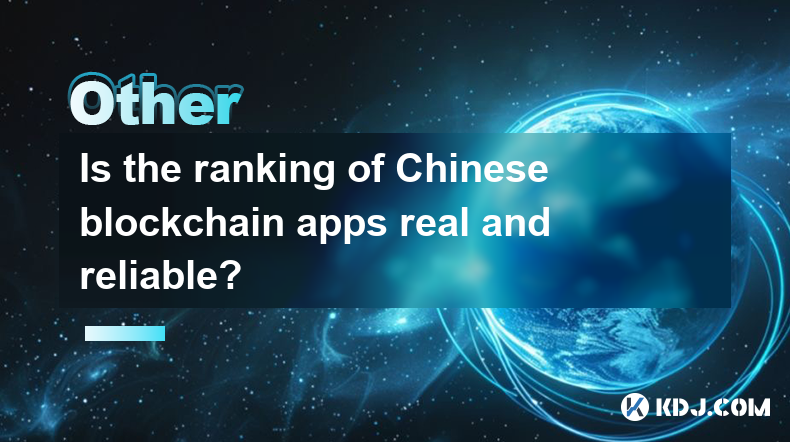
Is the ranking of Chinese blockchain apps real and reliable?
Apr 04,2025 at 09:01pm
The ranking of Chinese blockchain apps has become a topic of interest for many in the cryptocurrency community, as it provides insights into the popularity and adoption of blockchain technology within China. However, the reliability and authenticity of these rankings are often questioned. This article aims to delve into the factors that influence these ...
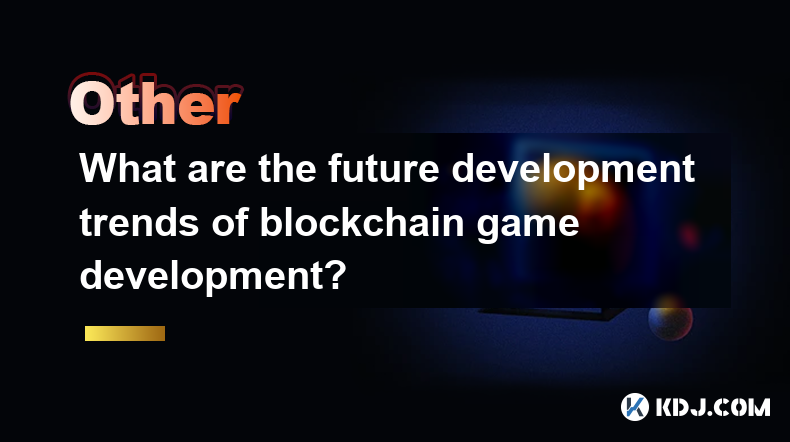
What are the future development trends of blockchain game development?
Apr 03,2025 at 05:00am
Blockchain technology has revolutionized various industries, and gaming is no exception. As we look to the future, several trends are set to shape the development of blockchain games. These trends not only promise to enhance the gaming experience but also to integrate blockchain technology more seamlessly into the gaming ecosystem. Let's explore these t...
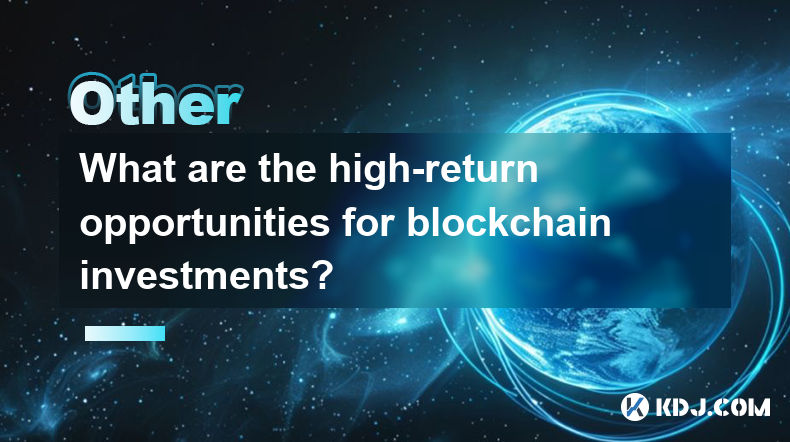
What are the high-return opportunities for blockchain investments?
Apr 05,2025 at 02:35pm
Blockchain technology has revolutionized the financial world, offering numerous high-return investment opportunities. These opportunities span various sectors within the cryptocurrency ecosystem, including cryptocurrencies, decentralized finance (DeFi), non-fungible tokens (NFTs), and blockchain startups. Each of these areas presents unique risks and re...
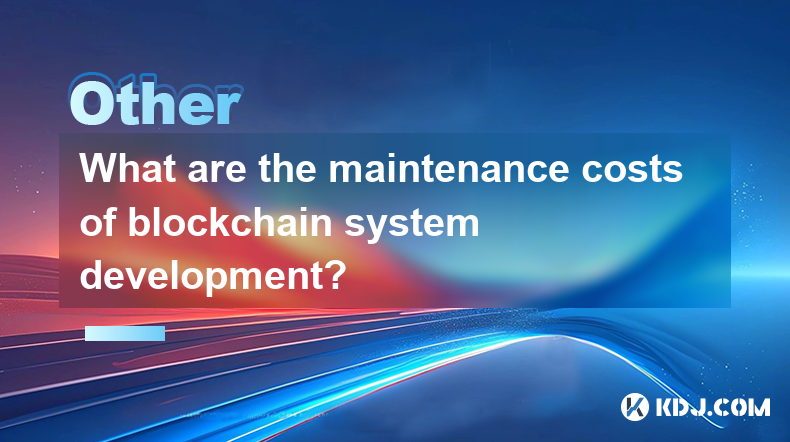
What are the maintenance costs of blockchain system development?
Apr 03,2025 at 06:07pm
The maintenance costs of blockchain system development are multifaceted and depend on various factors. These costs can include technical maintenance, security updates, infrastructure expenses, and personnel costs. Understanding these elements is crucial for anyone planning to develop or maintain a blockchain system. Technical MaintenanceTechnical mainte...
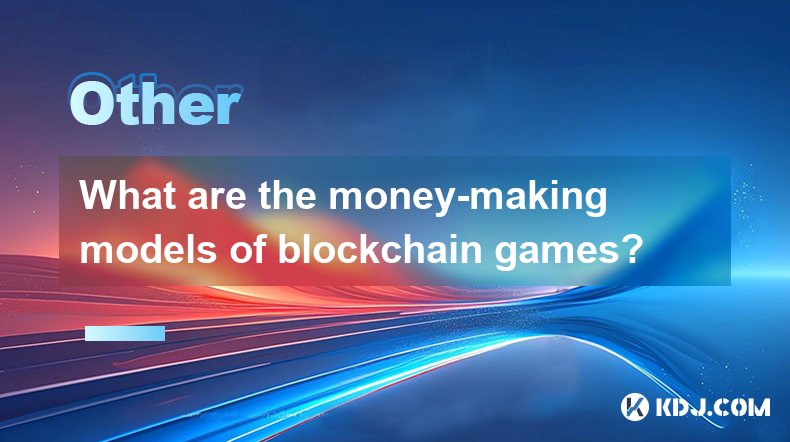
What are the money-making models of blockchain games?
Apr 04,2025 at 02:00pm
Blockchain games have emerged as a revolutionary way for players to earn real money while enjoying their favorite pastime. These games leverage the power of blockchain technology to create unique money-making models that benefit both the players and the developers. In this article, we will explore the various money-making models of blockchain games and ...
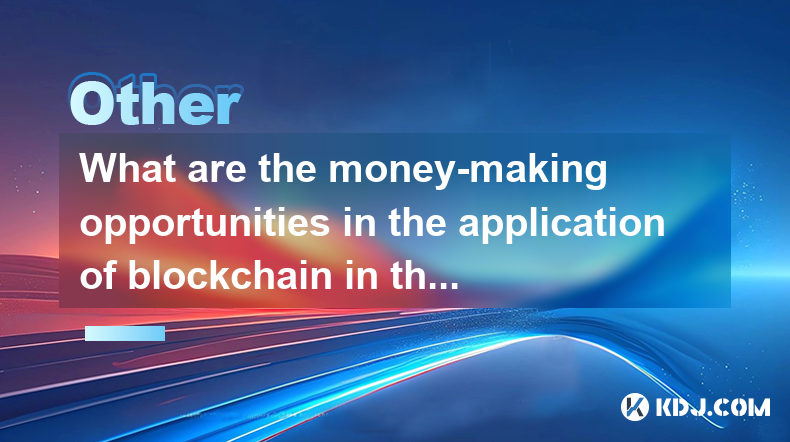
What are the money-making opportunities in the application of blockchain in the field of Internet of Things?
Apr 05,2025 at 10:35pm
The integration of blockchain technology with the Internet of Things (IoT) presents numerous money-making opportunities. Blockchain, with its decentralized and secure nature, can revolutionize how IoT devices interact, manage data, and conduct transactions. This article will explore various avenues where entrepreneurs, developers, and investors can capi...

Is the ranking of Chinese blockchain apps real and reliable?
Apr 04,2025 at 09:01pm
The ranking of Chinese blockchain apps has become a topic of interest for many in the cryptocurrency community, as it provides insights into the popularity and adoption of blockchain technology within China. However, the reliability and authenticity of these rankings are often questioned. This article aims to delve into the factors that influence these ...

What are the future development trends of blockchain game development?
Apr 03,2025 at 05:00am
Blockchain technology has revolutionized various industries, and gaming is no exception. As we look to the future, several trends are set to shape the development of blockchain games. These trends not only promise to enhance the gaming experience but also to integrate blockchain technology more seamlessly into the gaming ecosystem. Let's explore these t...

What are the high-return opportunities for blockchain investments?
Apr 05,2025 at 02:35pm
Blockchain technology has revolutionized the financial world, offering numerous high-return investment opportunities. These opportunities span various sectors within the cryptocurrency ecosystem, including cryptocurrencies, decentralized finance (DeFi), non-fungible tokens (NFTs), and blockchain startups. Each of these areas presents unique risks and re...

What are the maintenance costs of blockchain system development?
Apr 03,2025 at 06:07pm
The maintenance costs of blockchain system development are multifaceted and depend on various factors. These costs can include technical maintenance, security updates, infrastructure expenses, and personnel costs. Understanding these elements is crucial for anyone planning to develop or maintain a blockchain system. Technical MaintenanceTechnical mainte...

What are the money-making models of blockchain games?
Apr 04,2025 at 02:00pm
Blockchain games have emerged as a revolutionary way for players to earn real money while enjoying their favorite pastime. These games leverage the power of blockchain technology to create unique money-making models that benefit both the players and the developers. In this article, we will explore the various money-making models of blockchain games and ...

What are the money-making opportunities in the application of blockchain in the field of Internet of Things?
Apr 05,2025 at 10:35pm
The integration of blockchain technology with the Internet of Things (IoT) presents numerous money-making opportunities. Blockchain, with its decentralized and secure nature, can revolutionize how IoT devices interact, manage data, and conduct transactions. This article will explore various avenues where entrepreneurs, developers, and investors can capi...
See all articles





















































































